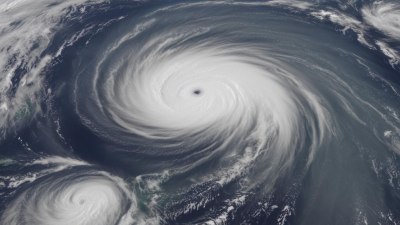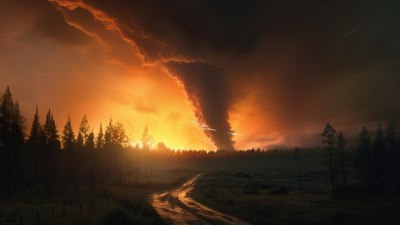The Subconscious Relationship Between Wind and Wonder
Explore the deep subconscious connection between wind and wonder that influences human perception and creativity.

The relationship between wind and wonder is both ancient and profound, touching upon the subconscious layers of human experience. From the earliest moments of human existence, the presence of wind has inspired awe, fear, and curiosity, shaping our myths, cultures, and artistic expressions. This article delves into the psychological and cultural significance of this relationship, exploring how the wind’s intangible qualities stir a sense of wonder that resonates deep within the human psyche.
To understand the subconscious bond between wind and wonder, we must first recognize what wind symbolizes. Air in motion, or wind, is an unseen force that evokes a complex mixture of emotions and associations. It can be gentle, caressing the skin and bringing a pleasant coolness on a warm day, or it can be fierce, howling as storms rage and trees bend. This dual nature of wind—both nurturing and destructive—mirrors the dualities inherent in wonder itself: curiosity and fear, possibility and uncertainty.
In many cultures, wind is personified as a spiritual or divine force. Ancient Greeks had Aeolus, the keeper of winds, while many Indigenous cultures see wind as the voice of nature and ancestors. This personification indicates a recognition of wind’s power beyond the physical, touching the spiritual realm. Such cultural attributions reveal how deeply embedded wind is in the collective unconscious, influencing not just conscious thought but subconscious perceptions that govern emotional responses.
Psychologically, the experience of wind can trigger a primal sense of connection to the environment. The senses react to the movement of air: the sound it creates, the way it shifts scents, the tactile feeling on skin and hair. These sensory cues can awaken memories and emotions stored in the subconscious mind. For example, a sudden breeze might evoke nostalgia by reminding one of childhood days or bring forth a meditative state by connecting one to the rhythm and flow of nature.
Scientists studying environmental psychology have noted that natural phenomena like wind can induce states of reflection and creativity. The unpredictable and transient nature of wind prompts the mind to wander and imagine, thus fostering a heightened sense of wonder. This effect is often leveraged in art and literature, where descriptions of wind accompany moments of inspiration or revelation.
Consider the role of wind in storytelling and mythology. Many ancient stories use wind as a symbol of change and transformation. It carries messages, spirits, or gods, facilitating journeys both physical and spiritual. This enduring motif reflects how our subconscious associates wind with the unknown and the possibility of discovery. These narratives feed back into the psyche, reinforcing the wind-wonder dynamic and fueling human creativity.
Moreover, the interplay between wind and wonder can be understood through the lens of neuroscience. The brain’s limbic system, responsible for managing emotion and memory, reacts strongly to sensory stimuli like wind. Wind’s unpredictable patterns can stimulate the release of neurotransmitters such as dopamine, which enhances feelings of joy and motivation. This neurochemical response can make the experience of wind feel magical or imbued with meaning.
On a broader evolutionary scale, humans have adapted to respond to environmental cues as a survival mechanism. Wind often signals changes in weather or the approach of threats, so heightened alertness to wind stimuli would have been advantageous. Over time, this alertness may have evolved into a deeper appreciation and a sense of awe for wind’s power, blending survival instincts with wonder.
In modern times, despite technological advances that have distanced us from natural elements, the subconscious relationship between wind and wonder remains potent. People still enjoy feeling the breeze on their face during outdoor activities such as hiking, sailing, or simply sitting in a park. These moments reconnect individuals to nature and themselves, often providing mental clarity and emotional balance.
Wind’s role in environmental sounds is significant too. Research shows that natural sounds, particularly those produced by wind rustling leaves or waves stirred by the breeze, reduce stress and improve cognitive function. This calming effect can open mental space for wonder, encouraging mindfulness and presence.
Artists and poets have long recognized the evocative power of wind. Poets like Wordsworth and Shelley used wind imagery to represent freedom, change, and the sublime. Artists have tried to capture the invisible force’s movement through brushstrokes and sculptures that mimic the fluidity and unpredictability of air currents. These creative efforts stem from the human fascination with wind’s dual invisibility and omnipresence.
In rituals and meditative practices worldwide, wind often plays an integral role. For example, in certain forms of meditation, focusing on the sensation of breath—essentially internal wind—helps practitioners connect with their inner selves and the universe. Many ceremonies incorporate natural wind as a symbol of spirit movement, transition, or communication with higher powers.
The subconscious interplay between wind and wonder also manifests in psychological metaphors. Phrases like “being carried away by the wind” or “winds of change” express experiences of uncertainty and transformation, which naturally provoke wonder mixed with apprehension. These metaphors illustrate how deeply wind imagery is woven into language and thought, facilitating expression of complex emotional states.
Scientific explorations into the impact of auditory stimuli on brain waves have shown that the sound of wind can induce alpha brainwave patterns associated with relaxation and creativity. This finding supports the idea that sensory experiences involving wind contribute to mental states conducive to wonder and insight.
From an environmental perspective, wind’s role in ecosystems is pivotal, influencing climate patterns, seed dispersal, and animal behaviors. This ongoing dynamic exemplifies how the invisible force shapes life’s rhythms on Earth. Recognizing this interconnectedness can deepen one’s sense of wonder toward the natural world and the unseen forces sustaining it.
Philosophically, wind challenges notions of permanence and control. Its intangible nature reminds humans of the limits of perception and forces acceptance of uncertainty. This acceptance can open up new dimensions of thought and emotion, where wonder arises naturally from the mystery and the vastness surrounding human existence.
Examining literary symbolism further illustrates wind’s dual role. In some works, wind symbolizes freedom and possibility; in others, it represents chaos and disruption. This ambiguity invites readers to ponder their own subconscious reactions to the unknown and stimulates the imagination, making wonder a shared psychological experience aligned with wind’s unpredictable character.
The relationship also extends to music. Composers often integrate wind sounds or instruments like flutes and breath-dependent pipes to evoke feelings of lightness, mystery, or profound emotion. These auditory elements engage listeners on an intuitive level, tapping into subconscious processes that associate wind with movement and life force.
In the practice of mindfulness, tuning into the sensation of wind can serve as an anchor to the present moment. This sensory focus diminishes mental chatter and heightens awareness, creating a fertile ground for experiencing wonder. Because wind is constantly changing, it mirrors the transient nature of thoughts and feelings, encouraging acceptance rather than resistance.
Interestingly, scientific studies on aromatherapy indicate that wind’s capacity to carry scents impacts emotional and psychological states. The subtle transmission of fragrances on the breeze can trigger subconscious associations and enhance mood, further linking wind to sensory wonder and emotional depth.
The subconscious connection between wind and wonder also manifests in dreams and subconscious imagery. Wind often appears as a symbol of change, freedom, or spiritual communication. These dream motifs highlight how early humans’ profiling of environmental phenomena continues to influence subconscious processing and emotional expression in contemporary contexts.
Technology has started to replicate or incorporate wind’s sensory qualities through virtual reality and sound design. These innovations demonstrate a recognition of wind’s importance in shaping immersive experiences and eliciting wonder, even in artificial environments.
In summary, the subconscious relationship between wind and wonder weaves through human culture, psychology, neuroscience, and environment. It affects us through sensory stimulation, symbolic meaning, and emotional resonance. Wind’s invisible yet perceptible nature invites curiosity, reflection, and creativity, making it a powerful catalyst for wonder that endures across time and cultures.











